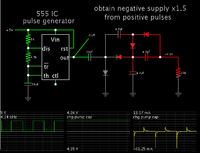adwnis123
Full Member level 4

Hello, I have the below connection:
A PIC is connected to a Xbee through UART. And my Laptop is connected to another Xbee.
When I use Hardware UART on the PIC (16 MHz,38400bps), the messages are sent correctly to the Laptop.
However, when I use use Software UART on the PIC (16 MHz,38400bps), the messages are NOT sent correctly, I get strange characters.
I use the PIC18F452.
What is wrong?
A PIC is connected to a Xbee through UART. And my Laptop is connected to another Xbee.
When I use Hardware UART on the PIC (16 MHz,38400bps), the messages are sent correctly to the Laptop.
However, when I use use Software UART on the PIC (16 MHz,38400bps), the messages are NOT sent correctly, I get strange characters.
I use the PIC18F452.
What is wrong?





